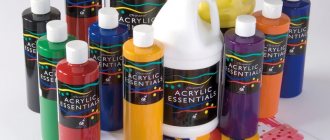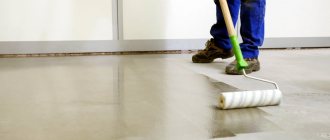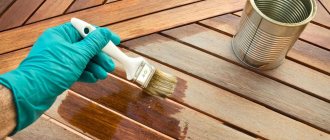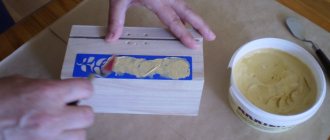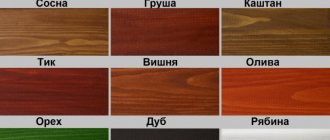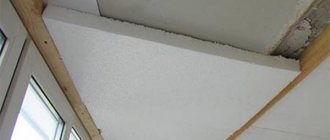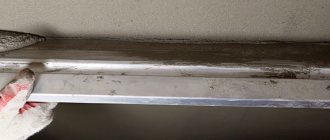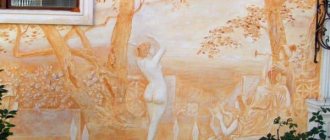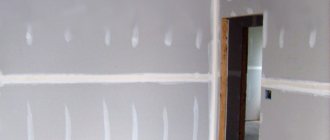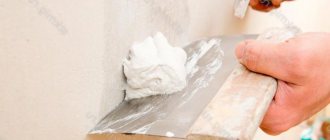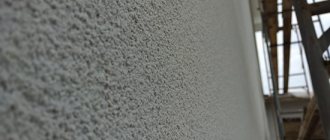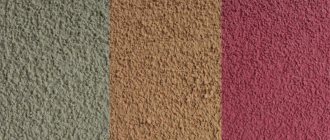Liquid plug - what is it?
The building material, which is called liquid facade cork, results in a durable coating. Manufacturers claim 10-15 years. They rarely talk about 30 years. In fact, you can say about the cork that it will last much longer. The limitation is that acrylic only lasts 10-15 years.
The product composition includes cork bark with a fraction of 0.5 to 1 mm (more than 90%), acrylic and various polymers. Manufacturers keep the specific recipe secret. This allows you to protect the market from low-quality counterfeits.
The main characteristics of the liquid coating are:
- Decorative character. Externally, the surface looks like a fur coat with a slight grain.
- High adhesion to almost all materials without the need for careful preparation of the base.
- Elasticity. Liquid cork retains its original shape as the structure shrinks. Seasonal changes in temperature and humidity do not have a destructive effect.
- Vapor permeability. This indicator is ensured by the peculiarity of the cork itself. Thanks to this, the base can “breathe” and get rid of the liquid contained inside.
- Moisture resistance. The dried solution can let steam out, but water cannot get inside.
Most manufacturers advertise their products using cork's qualities such as thermal insulation and noise absorption. However, these indicators depend on the final layer. If the permissible one-time application of 4 mm is observed, the effect of these properties will be almost unnoticeable.
Packaging option
As for the equipment, it can be divided into three groups:
- The household kit includes a compressor and a gun for filling deep cracks with putty.
- Professionals prefer to purchase a special universal installation, which is relevant when processing the facades of small buildings.
- The industrial model (MP-120) allows you to cover large areas of walls and roofing parts of buildings.
If self-application is envisaged, then it makes sense to purchase a compressor if the area is relatively large. They often give preference to hiring a construction team, because their work can be cheaper in cost than buying tools.
Preparatory work
High-quality material fully demonstrates its advantages if the technology is strictly followed during finishing. List of required works:
- preparation of material and surfaces;
- choice of glue;
- coating application.
First you need to calculate the required amount of materials. It is advisable to have a reserve of 10%, despite the fact that the work can be carried out by highly qualified specialists.
When purchasing cork covering, you need to carefully calculate the quantity and take a little more, just in case. In
addition, you need to check the products for integrity, and roll and sheet types need to be acclimatized - leave the material for two days in the room where subsequent finishing will be carried out. Often, when working with dimensional products, you should pre-cut them. Manipulations with tiles are carried out using an electric jigsaw; in the case of textiles and wallpaper, you can use ordinary scissors. Liquid compositions are thoroughly mixed until a homogeneous mass is obtained. If the material has been stored for a long time, it may be necessary to add water.
Cork-based coatings can hide small defects in walls. Despite this, you need to carefully prepare the surface. The base on which the coating will be applied should not crumble. If such areas are present, it is important to carefully treat them with building mixtures. Then a primer is applied to the surface. It is advisable to sand the painted surfaces well for better adhesion.
Water-based adhesive mixtures are not suitable for cork material
When purchasing glue, keep in mind that water-based compounds are not suitable for working with cork. In addition, it is recommended to avoid solid mixtures - Bustilate or liquid nails. Finishing manufacturers recommend using adhesives based on polychloroprene or acrylic. The choice depends on the application technology:
- one-sided - universal acrylic compounds are optimally suited for it;
- For double-sided applications, contact adhesive is most often used.
What is cork spraying used for?
As a rule, it is used as a topcoat. This is justified by the fact that cork coating meets decorative and protective criteria. The composition copes well with exposure to natural phenomena and does not lose its characteristics throughout the entire service life specified by the manufacturer.
Facade insulation
Less often, but still, cork is used as insulation. But for this you need to take into account the fact that the layer must be at least 10 mm. Due to the fact that the solution is applied by spraying, its use is not limited to vertical planes. Its properties allow it to cover any substrate regarding material, shape and geometry. This is especially true when processing permanent formwork for concrete structures and small architectural elements of a building.
Step by step instructions
Roll materials must be applied to walls pre-treated with glue. Then the canvas is lightly pressed and its position is adjusted. Rolling is done using a roller to ensure a tight fit. If necessary, remove excess glue from the edges. The next sheet is glued in a similar way, which is fixed end-to-end in relation to the previous one.
Cork wallpaper in rolls is applied to a surface pre-treated with glue
The technology for installing modules is practically no different from roll coating processing. The difference lies in the size of the canvas and the need for more control over its placement. After applying the adhesive, the slab should be pressed against the wall. To correct the position, a rubber hammer is used and tapped. The material is then rolled with a roller to improve the fit.
Treatment with a liquid composition is often carried out using a special putty gun, which is supplied with air from a compressor. The pressure in the latter must be at least 3 atm. Step by step procedure:
- Fill the gun with material.
- Holding the device at a distance of 50 cm from the wall, apply the composition evenly. The layer thickness should be no more than 1−1.5 mm.
- Allow the material to dry for several hours.
- Apply the next layer, hiding the unevenness that appeared during the initial processing.
- If necessary, thicker coatings can be produced by repeating the spraying procedure until the desired thickness is achieved.
Installation of cork covering is not particularly difficult; the result is an original, cozy design.
Walls made of cork materials are the optimal design solution. This type of finishing has a number of undeniable advantages over other coatings. The work cannot be called too labor-intensive, so even a novice master can cope with it.
The main advantages of liquid cork for facades
The main advantage of liquid cork is its composition. It is distinguished by natural ingredients, which has a positive effect on environmental friendliness and safety.
However, preference is given to this liquid composition for other reasons:
- affordable price;
- it is possible to carry out work with any type of facade;
- long service life;
- ease of application;
- covers minor imperfections in the base;
- the choice of color can come from both ready-made options and individual preferences;
- resistance to biological contamination and corrosion;
- does not burn.
It is worth separately considering the option of decorating the walls with cork panels. This is a finished product that has additional wax treatment to enhance the resistance of the building material to various external influences. Wood board is used as a base (or substrate) for the manufacture of panels.
A beautiful facade quickly and easily!
The advantages are considered to be the following:
- relatively light weight;
- the ability to perform installation work without the help of specialists;
- durability;
- high strength;
- resistance to fungus and mold;
- environmental friendliness.
In addition, the panels are easy to care for, and the liquid cork does not absorb odors. Another important point is the fact that dust does not settle on the surface of the product.
Scope of use
High-quality liquid cork is suitable for sealing any types of joints, seams, and problematic areas found on any floor covering or wall decoration. Cork sealants are excellent for joints between tiles and parquet, laminate, and cork flooring. This material can be used in any place where it is necessary to create a noise-insulating, insulating and sealing layer in the room. Here are the main uses of liquid stopper:
- sealing seams during repair or installation of panel buildings;
- sealing joints and seams between panels in different buildings;
- creation of expansion joints;
- sealing cracks when installing window and door structures;
- creation of sealing contours;
- sealing seams and joints in buildings made of wood and SIP panels;
- formation of gaskets in various mobile objects in order to reduce vibrations;
- creation of high-quality sound insulation of floors between floors and partitions between rooms.
The scope of use of cork sealants for joints and seams is very extensive, since the material can be applied not only to wood, parquet, laminate and cork, but also to PVC, metal, ceramic, glass, and concrete surfaces. These sealing products will not damage even the most delicate materials.
Manufacturers
When choosing a spray-on cork, always turn to trusted manufacturers. Thus, the modern market is represented by three main companies:
- Subertres, Italy. The domestic company Cap-Cor is actively involved in the distribution of building materials.
- Isocork, Russia. There is an opinion that the products are analogous to imported ones. Range: basic, fireproof.
- NanoCork, Russia. The manufacturer combines the achievements of different countries.
As for product quality, all materials from the presented suppliers are distinguished by high performance. Therefore, when choosing, you should pay attention to the provision of services for applying decorative coating, thereby reducing the costs of the entire event.
Use for soundproofing
Cork sealing products are often used for gluing soundproofing sheets and boards, as well as for sealing seams between these panels. The material significantly reduces the noise level, and when applied to a subfloor, it eliminates the squeaks of wooden boards. The product is used for soundproofing machines, installing certain blocks and components, and also makes it possible to reduce vibration of generators, machine tools, and other electrical equipment.
Cork for facade finishing: how to prepare the base
Work on finishing the base with cork implies mandatory preparation. In particular, the following must be done:
- Cleaning from efflorescence, grease stains and biological damage.
- Dust removal of the surface and removal of contaminants.
- Treat the base with a recommended primer that is suitable for the specific coating.
In addition to the above, you should protect all elements of the building that do not need to be coated with liquid cork. This is justified by the fact that strong polymers in the mixture have good adhesive properties. It will be difficult to wash them off the base.
Surface priming
As for small defects on the surface, cork masks them perfectly due to the permissible layer, which can reach 10 mm. True, it is formed not in one, but in three passes, which is important to observe.
Application for thermal protection
When insulating houses and other structures, sealing seams is a mandatory procedure. Creating thermal insulation of joints, seams and various surfaces protects against the occurrence of cold bridges, which could penetrate through hidden places and areas. Thanks to the reliable and strong adhesion of the cork sealant to the base, a monolithic, durable joint is formed.
The sealing agents have optimal fluidity and plasticity, due to which they penetrate even the smallest cracks, joints and defects, are very easy to apply and are simply smoothed out with a regular spatula. When the composition is used to seal joints of laminate or other finishing materials, it perfectly levels out any unevenness and roughness and makes the surface visually attractive. After hardening, the product can be tinted or painted.
Waterproofing and vapor permeability Suber Plast
This building material is considered one of a kind and unique. The reason for this is the wide range of applications and functional loads that the finished product corresponds to.
The coating has all the indicators listed above. The main ones are:
- impermeability to moisture;
- resistance to ultraviolet rays;
- the ability to withstand mechanical loads and variable natural phenomena while maintaining the integrity of the monolithic coating.
Scope of application of liquid stopper:
- decorative decoration of walls and ceilings indoors with any relative humidity;
- protection of roofs and terraces from moisture;
- sound insulation of the attic and basement;
- anti-corrosion treatment of metal building elements;
- installation of floor coverings with additional insulation;
- tinting in any shades.
In addition, the material is actively used in shipbuilding as protection. Due to its noise-insulating qualities, suber plast is popular in the decorative design of carriages and driver's cabins, music studios and clubs.
Once again about the properties
Sprayed liquid cork is a unique material that combines the best characteristics of the best building materials.
It has the following properties:
- protects the room from noise and cold;
- vapor permeable;
- has antistatic properties and does not accumulate dust;
- not affected by temperature changes, UV rays and aggressive substances;
- not subject to rotting;
- durable;
- safe. It is absolutely harmless for people with asthma and allergies.
Return to content
Application technology
When carrying out work on finishing the facade with cork, it is worth remembering that the solution can be used for no more than 4 hours. Temporarily, the indicator may vary depending on the consistency recommended by the manufacturer.
Work can be carried out at positive temperatures exceeding 5 degrees Celsius. This suggests that you can create a decorative coating throughout the year. The main thing is that the base is prepared and dry.
Preparation of the solution
If we compare the recipes of conventional plaster mixtures and cork material, the latter has strict proportions. The manufacturer indicates information about them on the packaging. Depending on the specific composition, the amount of water added varies.
The dry mixture contains various polymers. To prepare the solution, you must use clean water. Some manufacturers insist on pre-filtration in order to avoid disturbances in the chemical reaction of the binders with the liquid. The latter leads to the fact that the liquid plug will crack or peel off due to impaired adhesive ability.
There is an option to purchase a ready-made solution, which is packaged in sealed plastic containers. The only downside of this product is the cost. This is justified by the fact that due to the greater weight, transportation of building material is more expensive.
Preparation of the solution
Qualitatively, the dry mixture is no different from the finished solution. The difference will not be noticeable if the preparation and coating technologies are followed. It is important that the ready-to-use mixture is homogeneous, which is achieved using a construction mixer at medium speed.
Compressor settings
To ensure that the liquid plug is of appropriate thickness and that it is comfortable to work with the equipment, the craftsmen adjust the torch and compressed air pressure. So, the width of the first varies from 20 to 25 cm, and the indicator of the second is 3-4 atmospheres.
If you change the parameters upward, the spraying will be carried out with the plug partially bouncing off the base. Therefore, the desire to speed up the project implementation process in this way will be unjustified.
Exercising caution by reducing indicators will also not achieve the desired result. This approach will simply prevent the plug from coming out. Only the binding part of the mixture will be applied to the walls, which will dissolve in water.
Cork coating works
In accordance with the technology for applying the finished solution, a single-layer liquid plug has a thickness of up to 3 mm. Regarding material consumption, they are guided by an average of 0.8 liters per 1 square meter. meter. So, a bag with a capacity of 20-25 liters is enough for a single-layer treatment of a facade with an area of 30 square meters. meters.
Installation features
There are strict requirements for the transition between laminate and tile. Strict adherence to installation technology and careful execution will help achieve a positive result. The main requirement for joining surfaces is the absence of flaws on the edges of the tiles and laminate.
In addition to tiles, laminate and expansion joint, you need to purchase wood glue and sealant, which will be needed to hide minor bending defects at the joint. The color of the veneered end of the compensator is selected in accordance with the overall color scheme of the floor covering.
Installation of a solid cork expansion joint is carried out when one type of coating has already been laid. First of all, you need to trim the height of the cork tape. This should be done using a sharp knife, having first outlined the cut location on the strip. It is better to glue the compensator with wood glue, having previously cleaned and degreased the installation site. The compensator installation algorithm is as follows:
- thorough preparation of the joint by clearing mechanical debris, removing dust and priming;
- applying a thin strip of glue near the edge of the lamellas;
- laying the compensator tape on the applied glue and fixing the end edge;
- applying sealant between the edges of the laminate and the expansion joint;
- removing excess sealant using a wet cloth and then wiping the joint dry.
Further installation of the tiles is carried out from the formed joint. This will ensure a tighter fit between the cork and the ceramic. After installation is completed and the sealant and glue have completely dried, the cork seam, which does not have a veneered end edge, is sanded and varnished.
Installation of a liquid cork expansion joint should begin by applying masking tape to all edges of already laid surfaces. The joint is cleaned of mechanical debris and dusted. Work should be carried out at an air temperature of at least 5 degrees. Installation of a liquid cork compensator consists of the following steps:
- pour the composition from the tube into a wide container;
- fill the seam with a spatula or an air gun;
- cut off excess sealant with a spatula;
- wait for the surface to completely dry, which depends on the thickness of the connector, the width of the seam and the temperature and is 24-48 hours;
- remove the masking tape and wipe off any remaining sealant from the floor.
A cork expansion joint between the tiles and the laminate will allow you to achieve a perfect connection between the two surfaces and make the floor impressive and neat.
The entire process of installing a cork expansion joint can be seen in the following video.
Self-application errors
If you carry out the work yourself, you should familiarize yourself with the common mistakes of beginners in advance:
- neglect of preparation;
- use of alternative primer compositions (for example, for reasons of economy);
- increased relative humidity of the environment (relevant for façade design);
- exceeding the permissible value of a single-layer coating;
- uneven application of the mixture.
The base must be dried; violation of the rules will lead to the quality of the coating being inferior to the desired one.
Color range of liquid coating
Cork coverings for facades are sold ready-made, depending on the color scheme. There are 46 primary colors observed. In most cases, self-pigmentation of the solution is allowed by adding water-soluble dyes to the composition.
Color spectrum
On average, 1 liter for rich color is enough for a solution with a volume of up to 12 liters. The cost of pigments varies from 400 to 900 rubles.
Rules of care
The façade surface made of liquid cork can be kept clean using water supplied from a hose under low pressure. This will be enough to knock dirt off the walls.
The material is resistant to most detergents. Increased abrasion resistance makes it possible to use not only rags, but brushes with soft or medium bristles for mechanical cleaning. If there is a need to restore a damaged area, then use the same composition that was used when decorating.
As a result, liquid cork is considered the best option for facade design. High rates of positive characteristics have been tested in practice, so the material is gaining popularity at a rapid pace.
For parquet
During the installation of parquet boards, there is a need to seal the seams between the walls and the parquet. Thanks to the sealing agent, this job can be done very easily and quickly. Liquid cork is elastic, it will contract and expand along with the parquet, and is suitable for sealing cracks of any size.
And if defects such as chips and cracks appear on old parquet boards, then cork can be used to repair these damages. In addition, the sealant is used to eliminate the squeaks of this coating.
